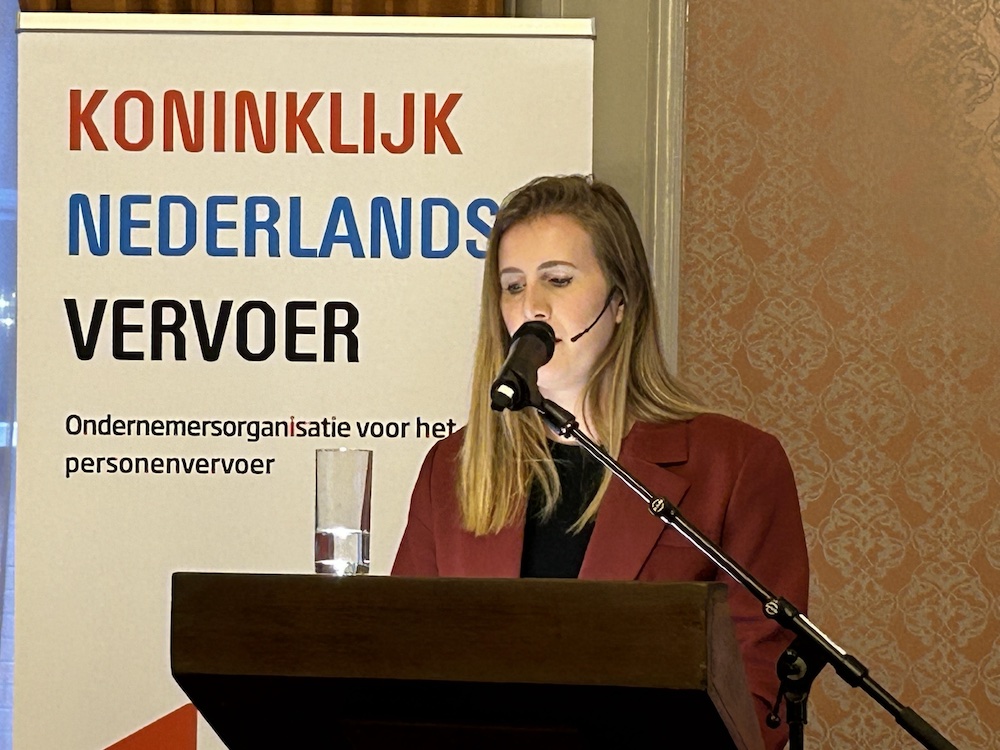Councilor Melanie van der Horst's speech at the KNV meeting provided a glimpse of the complexity and direction Amsterdam is taking.
The annual meeting of the Royal Dutch Carriers (KNV) in The Hague, a time when members and guests gather to ring in the new year, was enriched this year with the presence of Alderman Melanie van der Horst of Amsterdam. Her speech, aimed at professionals from various sectors of the trade association, offered a unique perspective on Amsterdam's vision on mobility and urban development.
Councilor van der Horst emphasized the need to look beyond the often heard stereotypes about Amsterdam. She acknowledged that perception outside the city limits is sometimes limited to simplistic images, and urged a more nuanced view. “With half an image it is also easy for caricatures to stick around and to criticize those strange, stubborn Amsterdammers,” she explained. This statement underlines the complexity of urban mobility issues and the different interpretations they can evoke.
behavioral change
The councilor spoke about the various opinions about Amsterdam, ranging from comparisons with Sodom and Gomorrah to praise that places the city above Paris. However, she emphasized that a change in behavior is needed, which can conflict with how people experience their freedom. “An experience that is sometimes at odds with the city we want to be, a city where you, the person, are central. Not the speed, but the attention to the environment and not the freedom of some, but the freedom of everyone,” says van der Horst.
An important moment for Amsterdam and the mobility sector was the Weesperknip, a measure that attracted a lot of attention last year. The councilor emphasized that Amsterdam strives for a balance between traffic flow, accessibility, quality of life and safety. She clarified that a car-free city is not the same as a car-free city. This is a crucial distinction, especially given the dependence of many people on car transportation, including logistics transportation and persons with physical disabilities.
This annual meeting of KNV not only marks a new year in the transport sector, but also provides a platform for dialogue and exchange of ideas that are essential for the future of mobility in Dutch cities and beyond.
The challenges and solutions in urban mobility are complex and require careful consideration of different interests. Councilor van der Horst's speech at the KNV meeting lifted the veil on this complexity and the direction Amsterdam is taking. Its approach, which focuses on people rather than speed or individual freedom, is a reflection of a broader trend in urban development and mobility management.

In her speech, Amsterdam councilor Melanie van der Horst emphasized the challenges and opportunities in the taxi sector. She acknowledges that the sector is going through turbulent times, but also emphasizes the fundamental importance of taxis in Amsterdam's urban transport network.
From this year onwards there will be an important change in policy: coaches are only allowed into the city center with a special exemption. This is part of a broader strategy to reduce traffic pressure in the city center while improving the accessibility and comfort of public transport for travelers. Van der Horst indicated that special transfer points have been set up where travelers can easily transfer from the coach to public transport. These locations are designed to provide a welcoming welcome, enhancing the overall travel experience.
Another significant development that the councilor mentioned is the agreement concluded with the sector at the end of last year on emission-free coach transport by 2030. This agreement reflects the growing commitment to environmentally friendly transport and Amsterdam's ambition to lead the transition to more sustainable means of transportation. The councilor praised the sector for its efforts and the willingness to take this important step.
Van der Horst also mentioned the 'Digital Management of Public Space' project, set up in collaboration with market parties. This project focuses on finding smart solutions for the access of vehicles such as coaches and freight traffic in the city. This initiative is an example of how technology and innovation can contribute to more efficient and sustainable urban traffic.
taxi sector
“Taxis are part of Amsterdam, like the canals and brown bars,” says van der Horst, underscoring the iconic status and crucial role of taxis in the city. They are not only an essential part of the transport system due to their contribution to the accessibility of the city, but also an important addition at times and places where public transport is more limited.
One of the most important initiatives announced by the councilor is the development of large network cards in collaboration with the taxi industry. These maps are intended to support taxi drivers in their work, by giving them better insight into the city structure and traffic flows. This could not only improve the efficiency of taxi services, but also the quality of services provided to passengers.
Van der Horst further emphasized the importance of uniform regulations for both the boarding market and the ordering market within the taxi sector. She looks forward to the government's evaluation of the Passenger Transport Act 2000, in the hope that it will lead to quick and effective national regulations. This could help stabilize the sector and ensure a fairer and more transparent framework for all involved.




